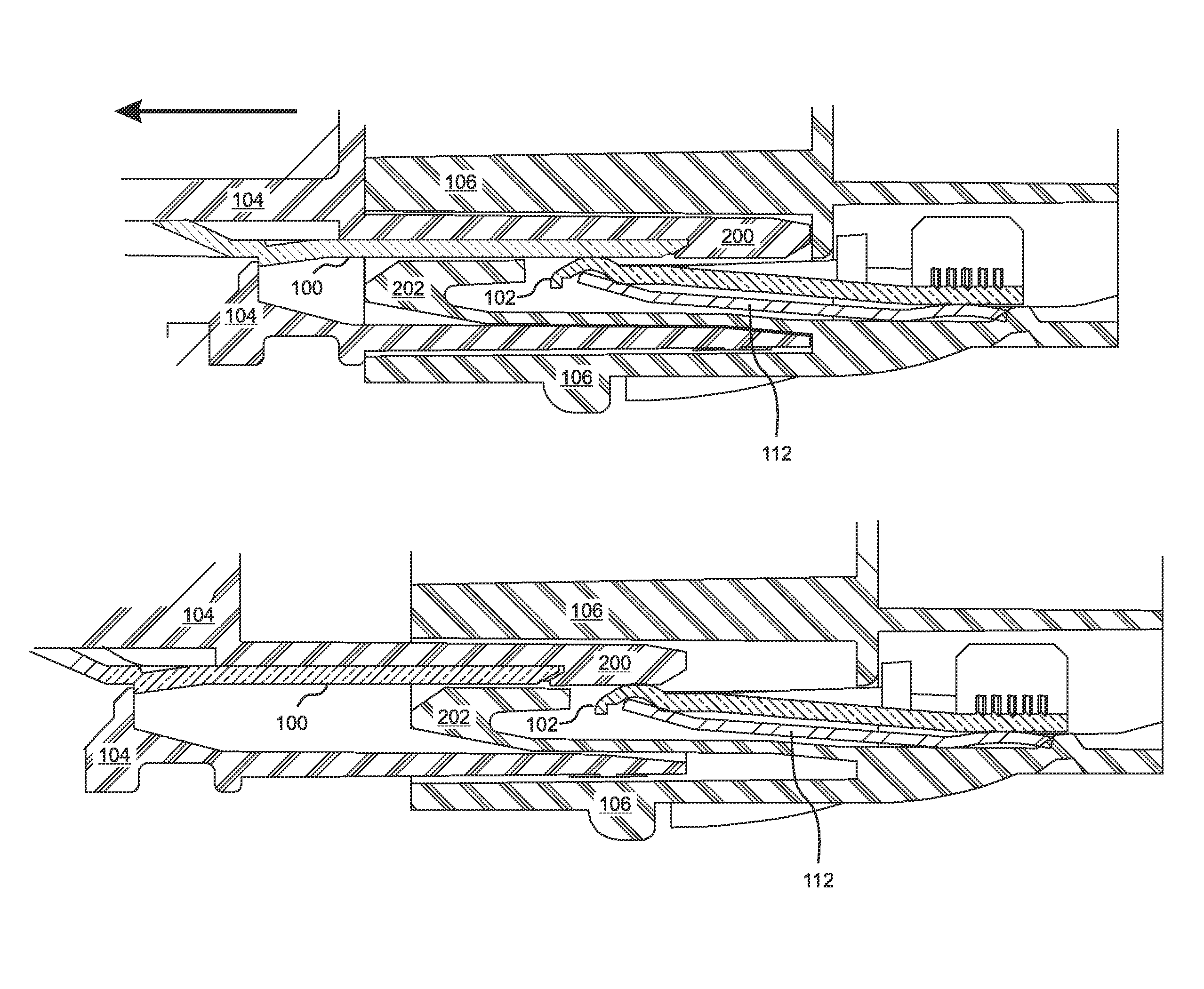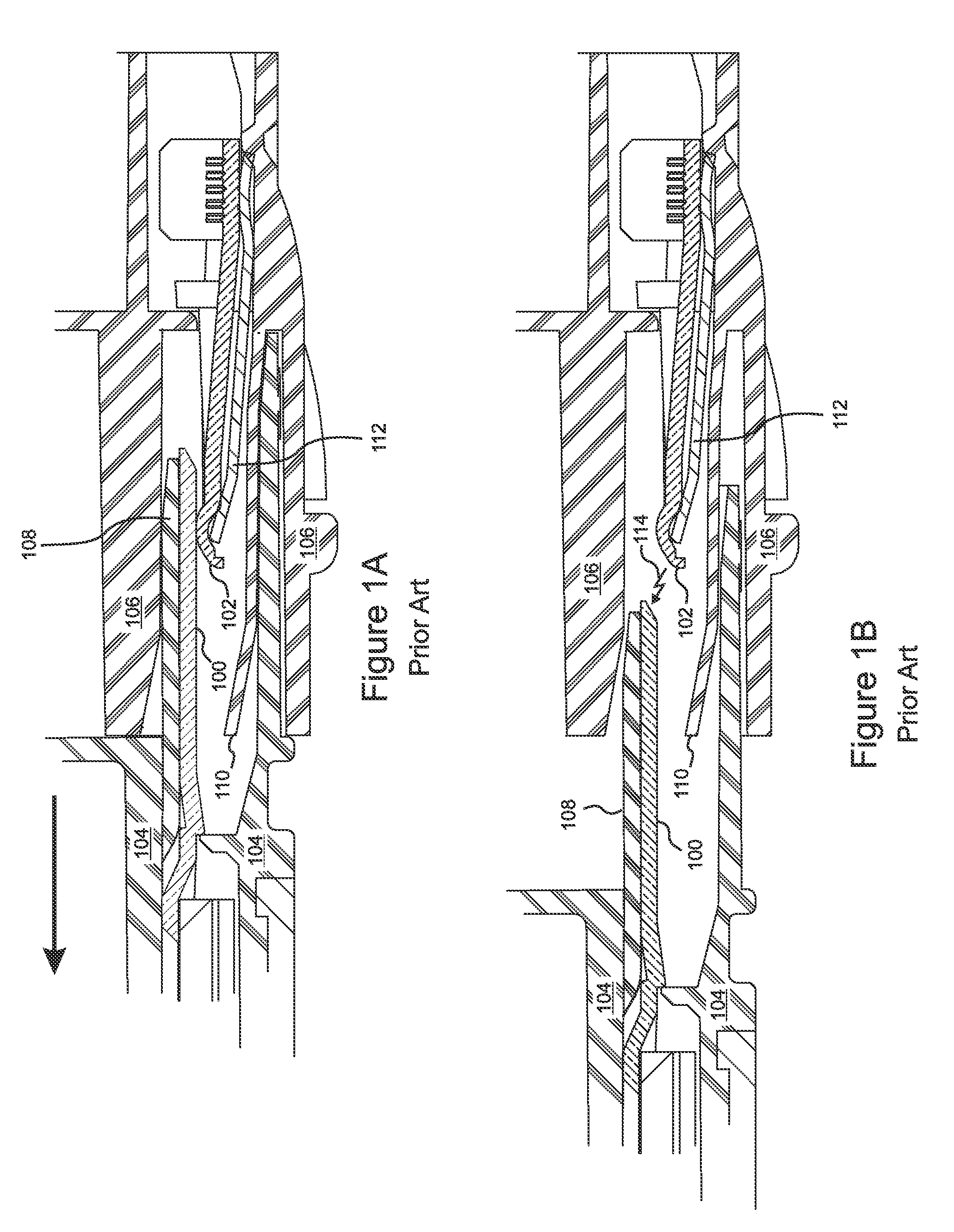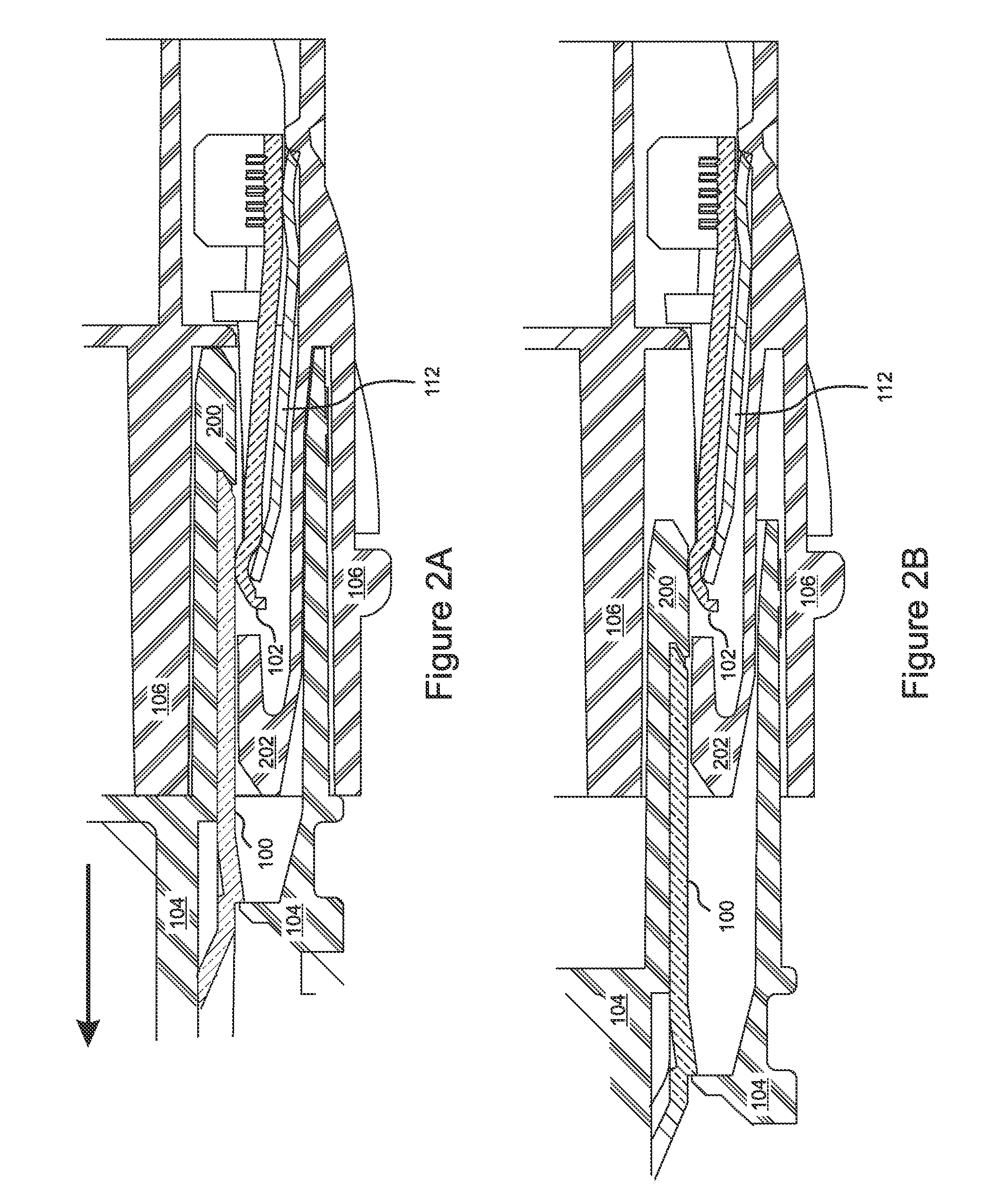Electrical connector with anti-arcing feature
a technology of electrical connectors and anti-arcing, which is applied in the direction of coupling contact members, coupling device connections, coupling bases/cases, etc., can solve the problems of reducing affecting the service burning to users, so as to prolong the useful life of electrical connectors, suppress electrical arcing, and suppress electrical arcing
- Summary
- Abstract
- Description
- Claims
- Application Information
AI Technical Summary
Benefits of technology
Problems solved by technology
Method used
Image
Examples
Embodiment Construction
[0022]With reference to FIG. 1A, a typical male and female connector pair of the prior art includes a male contact 100 and a female contact 102. One of the contacts (here the female contact 102) is flexible and is placed under tension by a spring 112 so that a shaped region of the contact 102 will ride over the leading end of the male contact 100 and press against a connecting surface of the male contact 100 when the connectors are mated. Insulated housings 104, 106 surround the male and female contacts, and shield the contacts from environmental hazards, as well as providing some protection to a user in case arcing occurs when the user is handling the connector pair. In the prior art example of FIG. 1A, additional insulating structures 108, 110 are provided proximal to the outer faces of the contacts 100, 102 to support the contacts 100, 102, and to provide receiving channels for the two insulating housings 104, 106 to mate. A spring 112 is also included to provide a pressing tensi...
PUM
 Login to View More
Login to View More Abstract
Description
Claims
Application Information
 Login to View More
Login to View More - R&D
- Intellectual Property
- Life Sciences
- Materials
- Tech Scout
- Unparalleled Data Quality
- Higher Quality Content
- 60% Fewer Hallucinations
Browse by: Latest US Patents, China's latest patents, Technical Efficacy Thesaurus, Application Domain, Technology Topic, Popular Technical Reports.
© 2025 PatSnap. All rights reserved.Legal|Privacy policy|Modern Slavery Act Transparency Statement|Sitemap|About US| Contact US: help@patsnap.com



